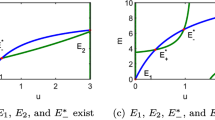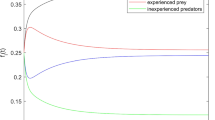Abstract
Given a two-person continuous non-constant sum game, a “solution” can be arrived at even in ignorance of the pay-off functions as each player tries to maximize his own pay-off by trial and error. The solution of the game considered here is either the intersection of two “optimal lines” (the case of the stable equilibrium) or parasitism of one player upon the other (the case of unstable equilibrium). The introduction of secondary satisfactions (linear combinations of the pay-offs) affects both the position and the stability of the equilibrium and thus the resulting primary satisfactions (the pay-offs). These effects of the matrix of transformation are investigated. In particular, it is shown that the social optimum, which is also the solution of the game where collusion is allowed, is attained if and only if the columns of the matrix are identical, and that this solution is generally stable. Some suggested connections with biological situations are discussed.
Similar content being viewed by others
Literature
Nash, J. 1951. “Non-cooperative Games.”Annals of Math.,54, 286–95.
Raiffa, H. 1951. “Arbitration Schemes for Generalized Two-Person Games.” (Report No. M720-1, Office of Naval Research.) Ann Arbor: Engineering Research Institute, University of Michigan.
Rapoport, A. 1947a. “Mathematical Theory of Motivation Interactions of Two Individuals: I.”Bull. Math. Biophysics,9, 17–28.
— 1947b. “Mathematical Theory of Motivation Interactions of Two Individuals: II.”Bull. Math. Biophysics,9, 41–61.
Rashevsky, N. 1951.Mathematical Biology of Social Behavior. Chicago: The University of Chicago Press.
von Neumann, J. and O. Morgenstern. 1947.Theory of Games and Economic Behavior. Princeton: Princeton University Press.
Author information
Authors and Affiliations
Rights and permissions
About this article
Cite this article
Rapoport, A. Some game-theoretical aspects of parasitism and symbiosis. Bulletin of Mathematical Biophysics 18, 15–30 (1956). https://doi.org/10.1007/BF02477841
Received:
Issue Date:
DOI: https://doi.org/10.1007/BF02477841




